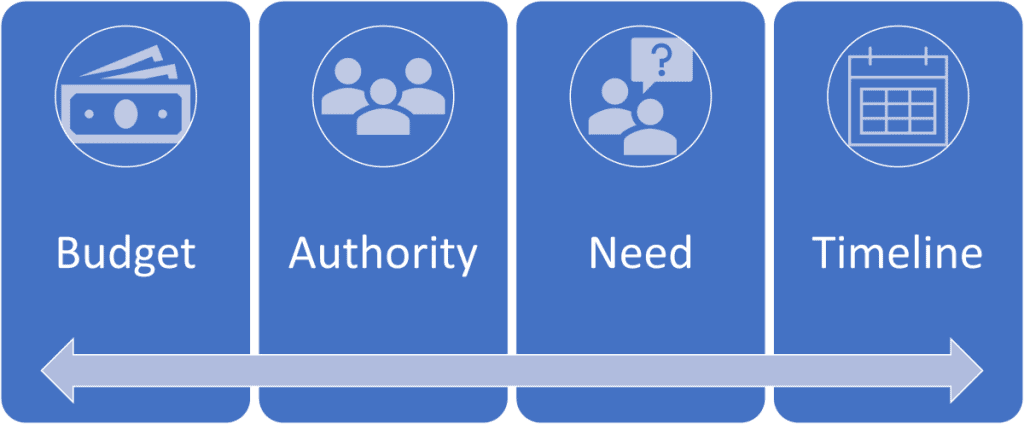
Examples of Speech Synthesis in the Legal System
Discover how speech synthesis technology is revolutionizing the legal system with real-world examples.

Sales objections can be a deal breaker. If you can’t overcome them, you’ll lose the sale every time. That’s why objection handling is so important in sales. With the right tools and techniques in your arsenal, you can overcome any objection and seal the deal.
In this article, we will discuss why objection handling is important, the different types of sales objections, and how to overcome them. We’ll also cover some common objections that you might encounter in your own sales career.
An objection is simply a question or statement from a prospect that expresses doubt about your product or service. Objections can come up at any stage of the sales process, but they’re most common during the proposal or negotiation phase.
Salespeople get objections because prospects are naturally skeptical. They want to be sure that they’re making the right decision before they commit to anything. So it’s your job as a salesperson to address their concerns and show them why your product or service is the best solution for their needs.
Objection handling is the process of responding to a prospect’s concerns in a way that alleviates their fears and builds trust. It’s an important part of the sales process because it can make the difference between a deal that goes through and one that falls through.
Being prepared to handle objections is an important skill for every salesperson. This involves being aware of the situation, having relevant background information, leading with empathy, and asking questions that are open-ended and thoughtfully crafted.
Situational awareness is the ability to understand what is happening around you and how it might affect you. In the context of objection handling, this means being aware of the customer’s body language, tone of voice, and words.
By paying attention to these cues, you can get a sense of what the customer is really thinking and feeling. This will help you to adjust your approach accordingly. If you want to understand why your prospect is an objection and how to overcome it, pay attention as the conversation unfolds.
Background information is anything that you know about the prospect that can help you to understand their objection. This might include information about their company, their industry, their specific circumstances, or even something personal that you know about them.
One of the best ways to overcome objections is to be prepared with relevant background information. This means doing your homework on the product or service you’re selling, as well as on the customer’s needs and wants.
If you know what you’re talking about, and you can confidently address the customer’s objections, you’re much more likely to make the sale.
Empathy is key when it comes to objection handling. No one likes to be sold to, but everyone appreciates feeling heard and understood.
When a customer raises an objection, it’s important to show empathy. This doesn’t mean that you agree with the objection, but it does mean that you understand where the customer is coming from.
When you’re addressing a customer’s objection, make sure to start with a statement of empathy. This might sound something like, “I understand how you feel,” or “I know that can be frustrating.”
For example, if a customer says they’re not interested in your product because it’s too expensive, you might say something like, “I understand that you’re worried about the price. Can you tell me more about your budget?”
Once you’ve shown empathy, you can start to address the objection head-on. Remember to stay calm and avoid getting defensive. It’s important to remain flexible and be willing to adjust your pitch if necessary.
Open-ended questions are a great way to get more information about an objection. For example, if a customer says they don’t have time to meet with you, you could ask, “Can you tell me more about your schedule and what kind of time commitment you’re looking for?”
If the objection is something that can’t be easily overcome, such as a lower budget, you can ask if there’s room to negotiate. For example, “I understand that price is a concern. Are you open to discussing a payment plan?”
Asking customers the right questions will help you understand their objections and give you a better chance of overcoming them.

Price objections are one of the most common objections salespeople face. The key to overcoming price objections is to reframe them in terms of value.
For example, let’s say you’re selling a product that costs $100. A customer might say, “That’s too expensive.” Instead of getting defensive or trying to lower the price, try reframing the objection by saying something like, “I completely understand. Can you tell me more about what budget you have in mind?”
This question allows you to better understand the customer’s needs and see if there’s a way to meet them while still providing value. If not, then you know price is truly an issue and it’s time to move on.
The handling of objections is important because it allows you the chance to provide more information about your product or service. This makes customers feel like they are getting their money’s worth and will help keep them coming back for future purchases, which means an increase in revenue. Additionally, when objections are handled properly, they can actually turn into sales.
BANT is an acronym that stands for Budget, Authority, Need, and Timeline. It’s important to understand BANT because it helps you qualify prospects and know when an objection might be raised. If you can identify that a prospect has the budget, authority, need, and urgency of the product or service you’re selling, then you can know for certain that an objection is not going to be valid.
BANT is a set of questions you confirm with every potential customer at the beginning of your sales process to make sure they fit what your company is looking for.

The most common statement for the budget-type objection is “I don’t have the budget for that.” When you hear this objection, it’s important to understand what the prospect’s budget limitations are. Do they have a set amount they’re willing to spend? Are there other products or services competing for the same budget?
Once you know the answers to these questions, you can start working on addressing their budget objection. If they have a set amount, you can discuss ways to work within that budget. If there are other products or services competing for the same budget, you can position your product or service as the better value.
The most common statement for the authority-type objection is “I need to talk to my boss.”
When you hear this objection, it’s important to find out more about the decision-making process. Who is involved in the decision? What is their timeline for making a decision?
The key to authority objections is to get the prospect to agree to introduce you to the decision-maker. This will help you build a relationship with the decision-maker and increase the chances that your product or service will be chosen.
The need objection is usually expressed as “I don’t need your product” or “I don’t think your product is a good fit for my needs.”
When you hear this objection, it’s important to ask probing questions to understand the prospect’s needs. Once you understand their needs, you can position your product or service as the best solution to meet those needs.
The timeline objection is when a prospect says they’re not ready to buy or they need more time to make a decision.
A common cause of the timeline objection is when the salesperson tries to close the deal too early. If you sense that the prospect isn’t ready to buy, it’s important to back off and continue working on building rapport and trust.
You can also try to overcome the timeline objection by asking the prospect when they would be ready to buy. This gives you a specific goal to work towards.
It can be difficult to understand another person’s true intentions, but it is important to try. If you think they might be avoiding a difficult conversation, ask them directly about it at a later date.
If you want to overcome sales objections, you need to respond in the right way and avoid reacting impulsively to your prospect’s concerns. Here are some guides you’ll need to perfect the art of objection handling:
Being a good listener is the key to success in any conversation, but it’s especially important in sales. You need to be able to understand what your prospect is saying and identify their specific objection. It is crucial that you listen to your prospect’s objections and do not try to respond too quickly. Allow them the time they need to voice their concerns fully before jumping in with a counterargument.
Validating what you hear from your prospect is essential to maintaining a good relationship with them. It shows that you are interested in their concerns and that you understand them. You can validate by restating the objection back to the prospect or by asking clarifying questions.
Validating can be done by repeating what they said, in your own words, to show that you were listening. For example, if a prospect says “I’m not sure this product is right for me,” you might say, “It sounds like you’re unsure if this product is the best fit for your needs.”
Asking clarifying questions is another way to validate an objection. This shows that you want to understand their concerns fully. For example, you might say, “Can you tell me more about what you’re looking for in a product?” or “What specifically concerned you about this product?”
Both of these methods can help to build rapport and trust with the prospect, which is essential for making a sale.
Once you’ve validated the objection, you can begin to address it. This is where your product knowledge and sales skills come into play. You’ll need to be able to quickly think of a solution that addresses the prospect’s objection.
For example, if a prospect objects to the price of your product, you might offer them a discount or payment plan. If they’re concerned about the quality of your product, you might offer a money-back satisfaction guarantee.
If you want to keep the conversation going in a natural way, follow up with questions when you hear your prospect’s objectives. If they start to pull back, asking more questions can be a great way to keep them talking.
To handle objections effectively, ask questions. This allows you to understand the objection better and find its root cause. Asking questions also demonstrates that you’re invested in your prospect’s concerns and want to help them resolve them.
Here are some examples of questions you can ask to handle objections:
“Can you tell me more about that?”
“What specifically concerns you about that?”
“What would need to change in order for you to feel comfortable with that?”
“If we could address that, would you be open to moving forward?”
Once you understand the objection, you can start to address it. If the objection is based on a misunderstanding, you can clarify. If the objection is legitimate, you can address it directly.
After listening effectively and validating the reasons as to why the objection is being made, it is important to understand the true cause of the objection. The objection may not always be what it seems on the surface. There could be a legitimate reason for the objection or there might be an underlying issue that needs to be addressed.
If you’re able to identify the true objection and understand the reasons behind it, you can then ask if you can suggest a solution. This shows that you’re trying to help and that you care about their concerns.
It is essential to have the plan to neutralize your buyer’s mind before you move forward in the sales process. Your objective is to cause them to be open-minded toward other perspectives, especially yours. Omitting this step will result in resistance from the buyer. You might know how objection handling works, but unless you include this part, all your skills will go to waste.
One of the best ways to overcome objections is by using social proof. This is when you show your prospects that other people have had success with what you’re offering. If others are doing it, then it must be good, right?
The idea behind social proof is that we are more likely to do something if we see that other people are doing it. It’s a psychological phenomenon that has been proven time and time again.
Ending with an unbiased resolution is key when objection handling. You want to make sure that your prospect feels like they’ve come to the decision on their own, without being pushed one way or another.
The best way to do this is by giving them a choice between two options that are both equally good. This way, they can’t say that you were pushing them towards a particular decision.
If your prospect is still undecided no matter what you do, then it’s time to set a date and time for a follow-up conversation. This gives them a chance to think about their decision and come back to you with any questions they may have.
It’s important to be respectful of their time and not try to push them into making a decision before they’re ready. Remember, you want them to be happy with their decision to work with you, so it’s worth taking the time to make sure they’re comfortable with everything.
By following these steps, you’ll be able to overcome any sales objections that come your way and close more deals. Just remember to stay calm, be prepared, and always be respectful of your prospects’ time and decision-making process.
This is one of the most common objections that salespeople hear. When prospects say that your product or service is too expensive, they may be trying to test you to see if you’re willing to negotiate on price.
The best way to respond to this objection is to first find out if there’s a specific reason why they feel it’s too expensive. Is it because they’re comparing your product to a cheaper alternative? Or are they concerned about the value they’ll get for their money?
Once you understand their objection, you can then address it head-on. For example, if they’re worried that your product is too expensive compared to a competitor’s, you can highlight the unique features and benefits that make your product worth the price.
If price is the only objection, you can try to negotiate a better deal. See if there’s any wiggle room in your price or if you can offer any discounts or special offers.
It’s frustrating when someone says they’re not interested in your product or service, but it doesn’t always mean that they won’t use what you have to offer.
There are a few ways to overcome this objection. First, try to find out if there’s a specific reason why they’re not interested. Is there something about your product or service that doesn’t fit their needs? If so, you can try to adjust your pitch to better match what they’re looking for.
Another way to overcome this objection is to simply ask them if they wouldn’t mind taking a quick look at your product or service. Often, people are more interested than they initially let on and just need a little push to actually take a look.
If the person is still not interested after you’ve tried these techniques, then it’s probably best to move on and focus your energy on someone who is more likely to be a paying customer.
Sometimes people have concerns about whether or not your product will be the perfect fit for them. You can overcome these Objections by helping clients understand just what their needs are and then tailor your pitch accordingly.
You can also provide them with specific examples of how your product or service has helped others in a similar situation. If you have any case studies or testimonials, now would be a good time to share them.
If a prospect raises an advantage of comparing your product or service with that of competitors, help them understand the value you offer. You can highlight unique features and benefits to make it easier for prospects to decide whether they want what’s on offer instead. You can also emphasize the importance of quality over price.
If a prospect is still fixated on price, you could offer them a discount or incentive. For example, you could offer free shipping or a free trial period. You could also highlight the value of customer service and after-sales support.
This objection is often used when a prospect is busy or doesn’t see the value in what you’re offering. To overcome this objection, you need to show them how your product or service can save them time or make their life easier.
For example, if you’re selling a time-tracking app, you could show them how much time they would save by using your app to track their tasks.
This objection is usually a way for prospects to avoid making a decision. To overcome this objection, you could ask them what they need to think about and address their concerns.
You could also suggest a specific time when you can follow up with them so they don’t forget. For example, you could say something like, “I completely understand. When would be the best time for me to follow up with you so we can chat about your decision?”
By doing this, you’re acknowledging their objection and giving them a way to move forward without feeling pressure.
When a prospect says they don’t have the budget for your product or service, there are a few ways you could respond.
You could try to understand their budget better by asking clarifying questions. For example, you could say something like, “I completely understand. Can you help me understand your budget a little better? What are you currently spending in this area?”
By asking questions, you can get a better understanding of their budget and see if there’s room for negotiation.
You could also offer a lower-cost solution. For example, if you’re selling a software subscription that costs $100 per month, you could say, “I understand that $100 per month might be out of your budget. We also have a lower-cost option for $50 per month.”
By offering a lower-cost solution, you’re giving the customer another option that might be more affordable for them.
If a potential customer tells you that your product or service isn’t a priority for them right now, it’s important to find out why.
You could say, “I understand that this might not be a priority for you right now. Can you tell me more about that?”
By asking questions, you can get to the root of the objection and see if there’s anything you can do to change the customer’s mind.
If a customer tells you they’re happy with the way things are, it is important to find out why they’re satisfied with their current situation.
By asking questions, you can get a better understanding of the customer’s needs and see if there’s anything you can do to improve upon their current situation.
You could say, “I’m glad to hear that you’re happy with the way things are. Can you tell me more about that?”
By asking questions, you can get to the root of the objection and see if there’s anything you can do to change the customer’s mind.
If a customer tells you they belong to a buying group, it is important to find out more about the group and what their purchasing process is. In this way, you can be sure to follow the proper channels and not waste your time or the customer’s time.
You could say, “That’s great! Can you tell me more about the group and how they go about making purchase decisions?” Knowing how your prospect arrives at the decision to buy from you is critical in objection handling.
Sometimes customers will tell you that your product is too complex. It’s important then, to find out more about their needs and what specific features they want in order for them not to feel frustrated by trying to explain everything at once.
If someone says “this isn’t easy,” or anything similar- don’t just assume they’re angry with how things work. Determine whether there are problems understanding something on the interface itself (elevator instructions?) Or maybe even something else altogether like: “This is my first time hearing about this product.” is the issue.
– Be patient and explain things step by step
– Find out what their specific needs are so you can highlight certain features
– Offer training or support services to help them understand your product better
If you’re ever unsure, just ask! And if all else fails, remember that you can always send them more information or follow up with them later.
This is a common objection, especially when you’re selling software or another type of product that can be customized. The key here is to find out if the customer really needs that feature, or if it’s just something they think would be nice to have. If it’s the latter, you can try to work around it by showing them how your product can be used in a different way, or how they could use another feature to get the same result.
If it’s something they really need, though, you’ll need to see if you can add it in. This might mean working with the development team to prioritize it, or even building it yourself if you’re able. Either way, you’ll need to make sure the customer is happy with the result.
Many people think that just because something is popular, it will last forever. This isn’t always the case, though. Just look at products like Google Glass and the Segway. They were both incredibly popular when they first came out, but now they’re mostly forgotten.
This objection is usually raised when you’re trying to sell something that’s new and different. The customer is worried that they’ll invest in something that won’t be around for long.
To overcome this objection, you need to show the customer that your product is here to stay. This might mean pointing to its strong market share, or its loyal user base. You could also highlight any awards it’s won, or any industry recognition it’s received.
When you’re on the phone with a customer who doesn’t want to talk, they might say something like “I’m not interested.” But this is just an effortful way of avoiding your product.
You need to prove why it’s worth their time and money so that when people avoid conversations like these, we can show them what our products offer. This might mean pointing to its strong market share, or its loyal user base. You could also highlight any awards it’s won, or any industry recognition it’s received.
Sometimes, people will flat-out say no to your offer. Other times, they’ll raise objections. And sometimes those objections can be overcome with a little finesse on your part. but other times, you might just be wasting everyone’s time by trying to shoehorn a square peg into a round hole. So how do you know when someone is objecting because they’re really interested, and when it’s just another way of saying no?
They’re not asking questions if someone isn’t asking questions, they’re probably not that interested. Questions show engagement and a desire to learn more. If they’re not asking any, it’s likely they’ve already made up their mind.
They’re not listening to your responses someone doesn’t seem to be listening to your responses, and it’s likely they’re not that interested. If they’re not taking in what you’re saying, there’s no way they’ll be persuaded by your argument.
They keep bringing up the same objection if someone keeps bringing up the same objection, it’s probably a smokescreen. They’re either trying to stall for time or they’re not interested in what you’re saying. Either way, you’re not going to make any headway by repeating yourself.
They’re not paying attention to your nonverbal cues if someone isn’t paying attention to your nonverbal cues, they’re probably not that interested. Your body language, tone of voice, and eye contact are all important when you’re trying to persuade someone. If they’re not paying attention to those cues, they’re probably not that interested in what you’re saying.
These are just a few obvious ways to tell if someone is interested or not. If you’re not sure, the best thing to do is ask them directly if they have any objections. This will give you a chance to address whatever it is that’s holding them back and move on.
Assuming that someone is interested when they’re not is one of the biggest mistakes you can make when objection handling. Not only will it waste your time, but it’ll also make you look foolish when they politely turn you down.
When someone gives you an objection, it’s easy to take it personally. After all, it feels like they’re rejecting you and your offer. However, it’s important to remember that objections are rarely personal. In most cases, the person isn’t rejecting you as much as they’re rejecting the offer.
There are a number of reasons why someone might give you an objection, and very few of them have anything to do with you as a person. Maybe they’re not interested in what you’re selling. Maybe they can’t afford it. Or maybe they’re just not ready to make a decision yet.
Whatever the reason, try not to take it personally. It’s not about you, and there’s no need to get defensive or take it as a slight.
As we’ve seen, objections are a normal and even expected part of the sales process. But that doesn’t make them any less frustrating! Learning how to handle objections like a pro will help you close more deals and build better relationships with your clients.
If you need help mastering the art of objection handling, or if you have any other questions about sales, our team is here for you. Get in touch today to learn more about how we can help you grow your business.



Discover how speech synthesis technology is revolutionizing the legal system with real-world examples.

Explore how speech synthesis technology is revolutionizing the agricultural industry with real-world examples and applications.

Explore how speech synthesis technology is revolutionizing the manufacturing industry with real-world examples.
